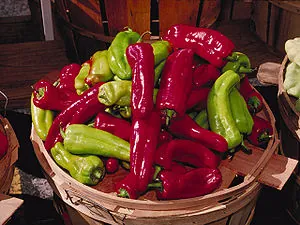Blog
20 Fun Facts about Hot & Spicy Food
Let’s celebrate the heat of southwest cuisine on August 19th with National Hot & Spicy Food Day! Whether your idea of hot & spicy is adding a sprinkle of pepper on your mashed potatoes or if you drown your food in the hottest salsa in the southwest, the range of options available at the grocery store or the farmer’s market ensure you can find a delicious way to celebrate the day with your favorite type of heat or spice.
To get you in the mood, here are 20 fun facts about hot & spicy foods.
- People have been using hot and spicy seasonings in their food for more than 6,000 years according to archaeologists.
- Christopher Columbus discovered chili peppers when he discovered the Americas in 1493.
- There are 140 varieties of chili peppers grown in Mexico alone.
- August 19th is National Hot & Spicy Food Day here in the U.S. and International Hot & Spicy Food Day is held in January.
- People who love fiery food have been dubbed pyro-gourmaniacs.
- One of the most common reactions to imbibing hot, fiery food is to sweat which is referred to as gustatory perspiration.
- The heat produced by spices or foods is measured in Scoville Heat Units (SHU), which were originally created by Wilbur Scoville who pioneered the process for measuring the heat produced by a food or spice. Today this test is conducted using a liquid chromatographer.
- For comparison, Jalapenos have an average range of 5,000 to 7,000 (SHU). Tabasco averages from 30,000 to 50,000 (SHU). Habanero peppers, long thought to be the hottest on the planet, generally average 200,000 to 300,000 (SHU). The Trinidad Scorpion Butch T, current holder of the World Record for the hottest pepper, has been rated at 1,463,700 (SHU).
- Capsaicin, the chemical in peppers that makes them hot, isn’t found in any other plant and is potent enough that people can identify it even when the concentration is as little as one part per million.
- The part of the chili plant that is just below the stem produces the ribs and the seeds, some of these parts are more than 16 times hotter than the rest of the pepper.
- With peppers, bigger might not be better, especially if you like them hot. Generally, the smaller the pepper, the hotter and none of the hottest peppers in the world are more than 3” long.
- Chili peppers are good for you. They are high in vitamins, a good source of beta carotene, calcium, and potassium, and may help reduce cholesterol.
- Many hot and Spicy foods have medicinal and antimicrobial properties.
- Garlic, chilies, onions, allspice, and oregano have all been proven to kill bacteria making food safer to consume.
- Chili peppers can help you lose weight by boosting your metabolism and curbing your cravings for fatty and sugary foods.
- When ingested, the capsaicin in peppers causes chemical processes in the body that affect thermogenesis , the process that is responsible for increasing both body heat and metabolism according to the Journal of Biological Chemistry.
- Although most people think eating spicy foods like chili peppers can cause stomach ulcers, the opposite is true. Ingesting spicy food can help heal ulcers by stimulating the creation of mucosa, the protective lining of the stomach, and killing the bacteria responsible for the ulcer.
- When handling peppers, especially if it is a pepper you have never used before, wear gloves. Some oils can blister skin or result in an allergic reaction.
- The best way to ease the burn of flaming hot peppers or overly-spicy mustard of horseradish is with cold milk or yogurt. Avoid water as it won’t mix with the oil and will only result in moving the heat to other parts of your mouth.
- Don’t forget about hot mustard, spicy mustard, and horseradish which all fit into the hot & spicy food category. Although they don’t pack the same punch as their cousins the peppers, they can be a good alternative to spice up your dinner for those who don’t like or can’t tolerate the heat produced by peppers.
Looking for a spicy recipe for your in-season Arizona produce? Go to Fill Your Plate (www.fillyourplate.org) and click recipes or Arizona in-season produce.
Sources:
http://www.maritimemadness.com/node/29
http://www.punchbowl.com/holidays/international-hot-spicy-food-day
http://www.bromography.com/2011/01/10/hot-spicy-food-international-day/
http://www.hotsauce101.com/fiery-food-facts.html
http://www.livestrong.com/article/36905-hot-peppers-speed-up-metabolism/
http://en.wikipedia.org/wiki/Trinidad_Scorpion_Butch_T_pepper
Related Articles:


















